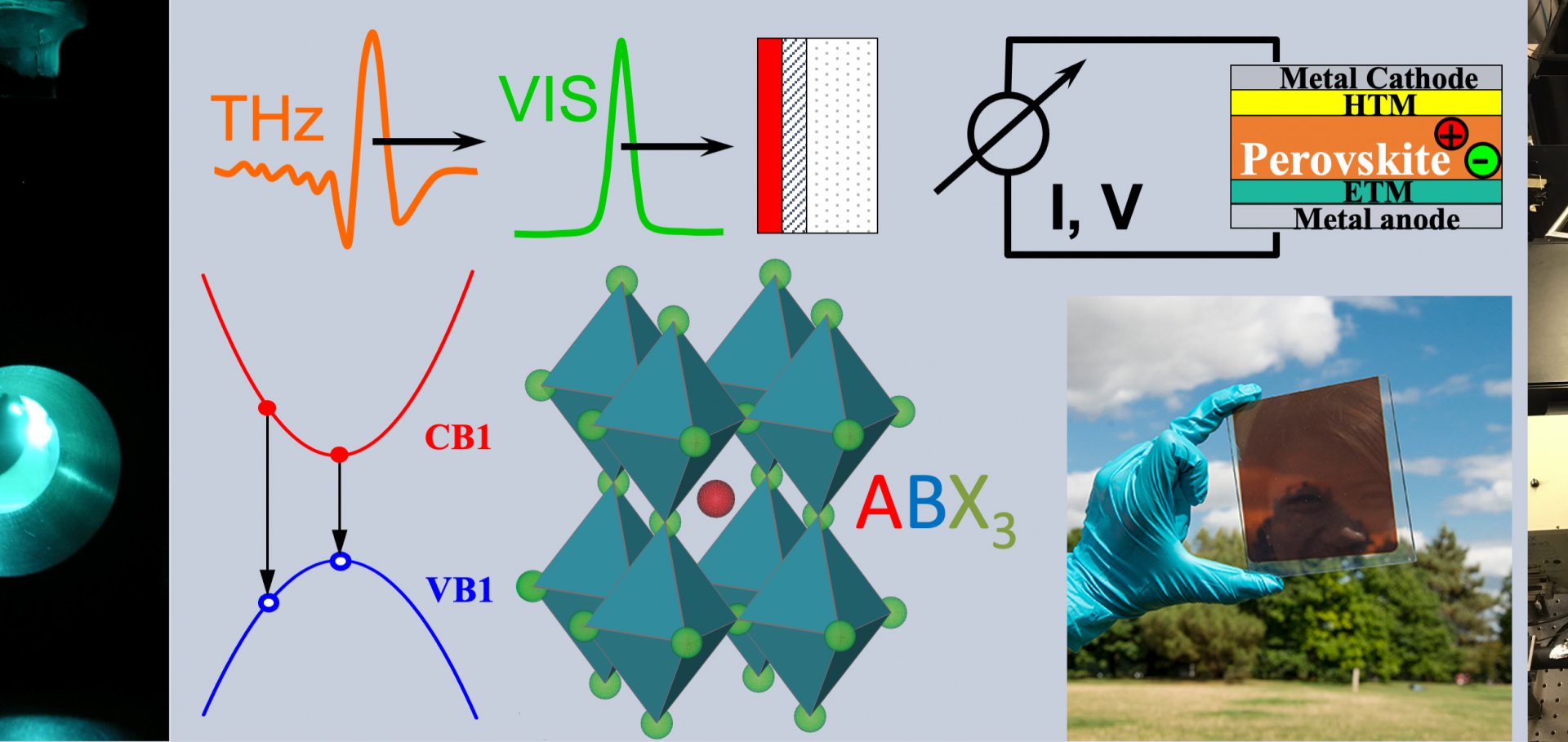Nanowires: a New Horizon for Polarization-resolved Terahertz Time-domain Spectroscopy
Optica Publishing Group (2021) sth2f.1
Terahertz Conductivity Analysis for Highly Doped Thin-Film Semiconductors
Journal of Infrared, Millimeter, and Terahertz Waves Springer Nature 41:12 (2020) 1431-1449
Efficient energy transfer mitigates parasitic light absorption in molecular charge-extraction layers for perovskite solar cells
Nature Communications Springer Science 11:1 (2020) 5525
Abstract:
Organic semiconductors are commonly used as charge-extraction layers in metal-halide perovskite solar cells. However, parasitic light absorption in the sun-facing front molecular layer, through which sun light must propagate before reaching the perovskite layer, may lower the power conversion efficiency of such devices. Here, we show that such losses may be eliminated through efficient excitation energy transfer from a photoexcited polymer layer to the underlying perovskite. Experimentally observed energy transfer between a range of different polymer films and a methylammonium lead iodide perovskite layer was used as basis for modelling the efficacy of the mechanism as a function of layer thickness, photoluminescence quantum efficiency and absorption coefficient of the organic polymer film. Our findings reveal that efficient energy transfer can be achieved for thin (≤10 nm) organic charge-extraction layers exhibiting high photoluminescence quantum efficiency. We further explore how the morphology of such thin polymer layers may be affected by interface formation with the perovskite.Atomic-scale microstructure of metalhalide perovskite
Science American Association for the Advancement of Science 370:6516 (2020) eabb5940
Abstract:
Hybrid organic-inorganic perovskites are exciting materials for solar-energy applications whose microscopic properties are still not well understood. Atomic-resolution (scanning) transmission electron microscopy, (S)TEM, has provided invaluable insights for many crystalline solar-cell materials, and is used here to successfully image CH(NH2)2PbI3 thin films with low electron-radiation dose. Such images reveal a highly ordered atomic arrangement of sharp grain boundaries and coherent perovskite/PbI2 interfaces, with a striking absence of long-range disorder in the crystal. We demonstrate that beaminduced degradation of the perovskite leads to an initial loss of CH(NH2)2 + ions, leaving behind a partially unoccupied perovskite lattice, which explains the unusual regenerative properties of these materials. We further observe aligned point defects and climbdissociated dislocations. Our findings thus provide an atomic-level understanding of technologically important lead-halide perovskites.Impact of tin fluoride additive on the properties of mixed tin-lead iodide perovskite semiconductors
Advanced Functional Materials Wiley 30:52 (2020) 2005594


